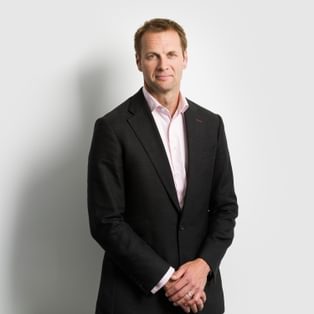While many people see green energy as the only sensible way to generate power, there are many financial challenges facing the sector.
Sam Tye, Fladgate’s Green Energy Group Lead, and Jeremy Whiteson from our restructuring and insolvency team set out some thoughts on the challenges this sector faces and ways to mitigate risks.
While we can casually talk about the “green energy” sector, it is not one homogenous block. Onshore and offshore wind, solar, battery storage, EV charging, waste to energy (and biomass) all have their own dynamics and challenges. And that’s before you get on to circular economy and other green business issues. These are, however, overlaid with some common themes.
What are the issues facing the main renewable energy types?
- Wind is a great source of power for a windswept island in the Atlantic. The National Grid has reported that it contributed 29% of the UK’s electricity generation in 2023. However, onshore wind power in England and Wales has almost ground to a stop (Scotland has a slightly more accommodating regime). The planning system has made new projects of substance almost impossible to build. The Labour Party has promised a loosening of the planning system and a doubling of onshore wind capacity, but at this stage there is a lack of detail as to how this will be achieved.
- Offshore wind is a much bigger market for the UK, where our generative capacity is second only to China and, according to the Crown Estate, represents 40% of European offshore wind capacity. This continues to grow and remains an area of focus across the political landscape.
- Solar power is considered by many to be transformative for the world. The Economist recently predicted that it would be the biggest source of electricity for the world by the mid-2030s and the biggest source of power for the world by the mid-2040s. While the UK is at a disadvantage here to sunnier and less crowded countries with more regular daylight hours, it still represents almost 5% of UK electricity in 2023 according to National Grid figures. As the production of panels and electricity-generating equipment increases, becomes cheaper and the technology improves, this is likely to be a bigger source of energy even for the cloudy UK. Supplies are currently constrained by the dominance of China in production; that is considered by many to likely broaden out as the USA and others seek to avoid reliance on China in this field. Development of new solar farms suffered a precipitous decline in the UK following the withdrawal of subsidies in the late 2010s, but has since made a steady recovery and is set to be a key aspect of the energy mix in the UK going forward.
- According to National Grid figures, waste to energy, biomass and anaerobic digestion represented a further 5% of electricity production in 2023. These plants have faced difficulties with reliability and security of feedstock supply amongst others. Many have run into financial difficulties and Fladgate has advised on a number of distressed situations amongst these asset classes.
- Solar and wind farms are, by their nature, dependent on climactic conditions and result in the intermittent generation of electricity. As the grid increasingly relies upon electricity generated from renewable sources, the requirement for energy storage - both shorter and longer duration – becomes more pressing. Whilst there have been significant amounts of development of utility scale lithium battery storage in the UK, there is still a requirement for further deployment. The recent declines in battery storage revenues may dampen investor appetite, which had reached new heights in 2022, for this sector. Longer duration storage continues to be an aspect of the energy net zero transition that has seemingly been neglected due to the significant construction costs associated with typical long duration storage, such as pumped hydro.
- For electric vehicles, the system also needs to integrate methods of passing power to users. Charging points in the UK are run by a variety of operators who require significant financial reserves or backing to be able to deploy charging points in areas which may not yet have sufficient EV take-up to enable near term profitability. Take-up of electric vehicles has been slower than hoped, perhaps due to cost, lack of sufficient charging infrastructure and perceived weaknesses in battery technologies. Some of this may receive a boost from the anticipated influx of cheaper Chinese electric vehicles over coming years.
- And the circular economy – not a method of generating power, but a focus on reusing and recycling materials is a growing trend in UK manufacturing which we have seen many of our clients embrace.
What are the common challenges?
In addition to the specific challenges for sub-sectors, there are some common challenges:
- Planning – the UK planning system makes large and unsightly plants easy to oppose and the process of obtaining planning permission a protracted one. That may be eased by changes in planning promised by a Labour government but details are yet to be seen.
- Government policy – each of the aforementioned sub-sectors require the stability and certainty provided by consistent government policy. Continually altering policy directions, including target dates for achieving certain milestones (e.g. the sale of new vehicles with internal combustion engines), give the relevant market participants and consumers a confusing picture as to the future of the energy and transport sectors in the UK.
- Technology – this is a continually evolving sector in which technology can fast become redundant. That makes substantial capital investment hard to fund. Targeted government support could help.
- Fluctuating fossil fuel prices – however, when they are low, it makes many sources of renewable energy too expensive. That is partly addressed by the regulated pricing for purchase of electricity onto the grid, but still poses a challenge.
- Security of supply – the UK depends on imports of equipment and necessary minerals from overseas. Dependence on China for solar and some other electricity-generating equipment may be difficult if relations deteriorate.
- Fragmentation – many parts of the sector (such as waste to energy or charge point operators) have significant numbers of small operators. Consolidation may lead to greater efficiencies.
What has Fladgate seen?
We have advised on a number of distress issues in relation to green energy businesses and projects. The exact nature of the difficulties faced by these projects and businesses varies from project to project, but the difficulties with price fluctuations in feedstock, small and inefficient businesses, and a lack of strong and focused finances have been apparent.
In the EV charging and battery storage sectors, we have seen some consolidation and a need for greater financial stability, but this has been more “stress” than “distress”.
The larger plants have different dynamics but often have access to better and more secure funding structures.
The path to net zero power generation is seen as essential for the UK economy. However, the route is not without a few likely bumps along the way.
If you would like to discuss anything that has been covered in this article, please reach out to Sam Tye or Jeremy Whiteson.



































































